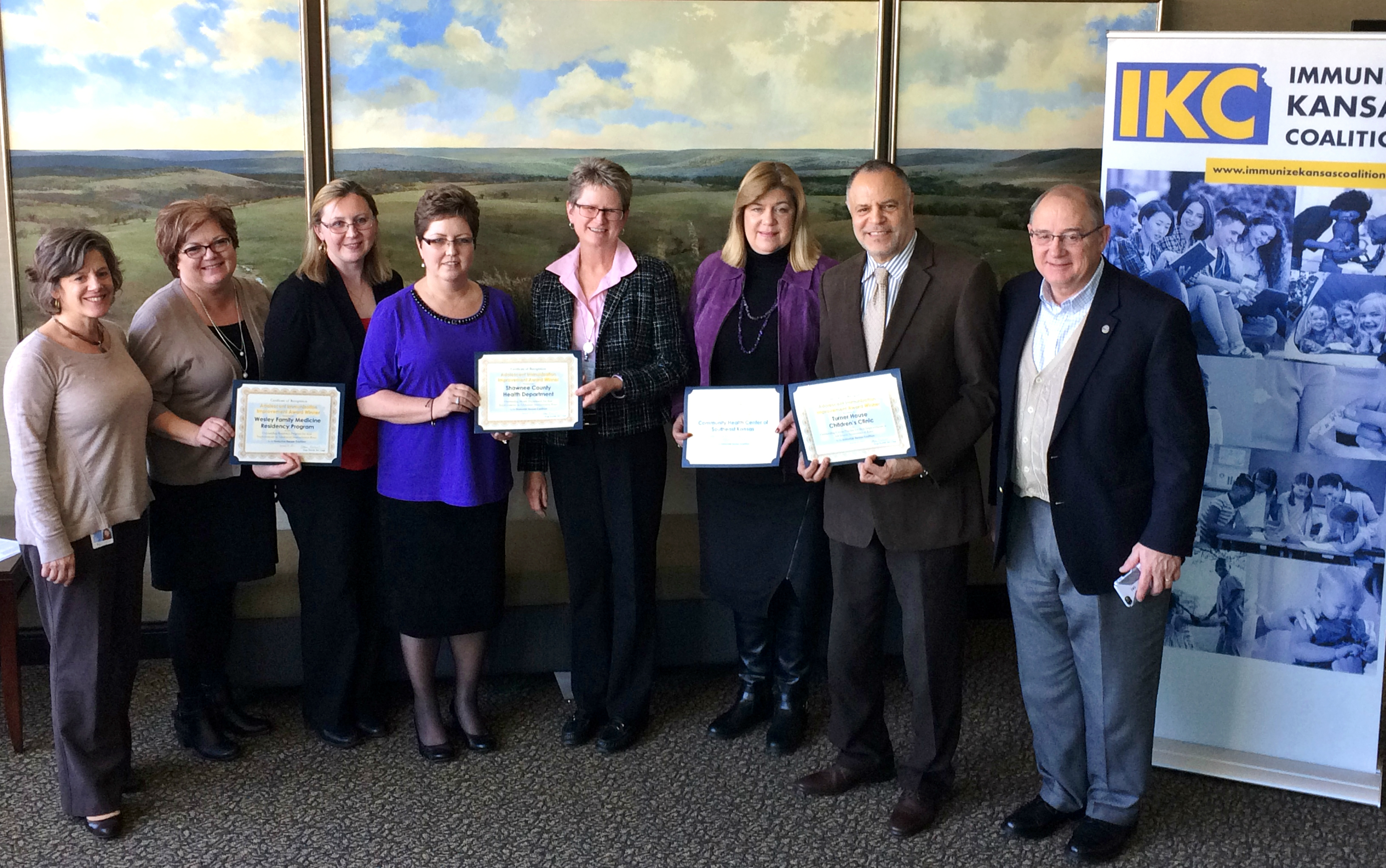Previous Adolescent Immunization Recognition Grant Award Winners
January 2017
Last January, Immunize Kansas Coalition (IKC) honored four organizations in three categories with recognition grant awards for their improvements in adolescent immunization rates:
- Outstanding Group Practices: Community Health Center of Southeast Kansas and Turner House Children’s Clinic
- Outstanding Local Health Department: Shawnee County Health Department
- Outstanding Residency Program: Wesley Family Medicine Residency Program

The Adolescent Immunization Recognition Grant Award was developed by IKC in 2015 to support innovative, collaborative, and sustainable methods to increase age-appropriate immunization rates for Kansas adolescents. Immunize Kansas Coalition identified human papillomavirus (HPV) and meningococcal vaccines as specific targets for improvement in 2015. In 2015, Kansas adolescent immunization rates were below the national rate for both HPV (50.9 vs 62.8 percent) and meningococcal (63.7 vs 81.3 percent).
The winners were chosen from an outstanding field of nine immunization provider organizations who worked on improving their adolescent immunization rates during most of 2016. “I was very impressed with all applicants. All providers demonstrated improvements and used a variety of innovative approaches and proven interventions to increase their rates. We hope to share some of the lessons learned by these providers with others in the state,” said Hope Krebill, IKC Chair.
Adolescent Immunization Recognition Grant Winners
Community Health Center of Southeast Kansas, Pittsburg, set a goal of improving the completion rate of the HPV series among their adolescent population. This goal was realized as the center improved series completion from 13 to 23 percent. Strategies identified by Community Health Center of SEK include improved efficiencies in communication, administration, and coordination with partners in the school system and with pharmacies.
Turner House Children’s Clinic, Kansas City, worked to improve HPV series completion through an ongoing quality improvement project. Turner House began their efforts to improve HPV series completion in 2014. At outset, the completion rate was 30 percent. This was improved to 61 percent by December 2015 when Turner House began participating in the Recognition Award program. By project end, the HPV series completion for Turner House improved to 71 percent. Through this process clinic staff recognized improved patient communication as a major component of their success.
Shawnee County Health Department, Topeka, set a goal to improve HPV vaccination rate. At baseline 74 percent of patients had received one or more dose in the HPV vaccination series. By project end, this improved to 88 percent of patients receiving one or more dose of the HPV series. Shawnee County Health Department accomplished goal by utilizing a quality improvement methodology to continuously monitor and modify efforts. Staff found success offering extended clinic hours that coincided with the end of the school’s 30-day grace period. An ongoing benefit from this project, beyond improved immunization rate, is greater communication and collaboration with school nurses.
Wesley Family Medicine Residency Program, identified meningococcal immunization rates as a target for improvement during the Recognition Award project period. At outset, meningococcal vaccination rate was 50 percent. By project end, this increased to 71 percent. Program components included clinic-wide staff education, regular immunization data review, and intervention components to address specific barriers identified. All staff were encouraged to initiate conversation with adolescents and parents on immunization. Materials throughout the practice encouraged patients and parents to ask for information regarding immunization. Careful review of immunization data revealed that they were serving a high number of foster children. This allowed them to identify the importance of an immunization record and work flow processes were introduced to ensure that immunization records were located and brought up to date.

